




3. The East Midlands Exhibition, August-October 2025
The third in the series, this collection presents some of the most interesting pictures from the Rutland County Museum Exhibition in 2025. This exhibition marked the first time over fifty of Petit’s pictures had been displayed together since 1869. A Symposium on September 27th explored his architectural achievements also for the first time. Three sections of the exhibition focused on local counties, while a fourth section of 12 pictures demonstrated the variety and forward-looking nature of Petit’s art. Contact enquiries@revpetit.com
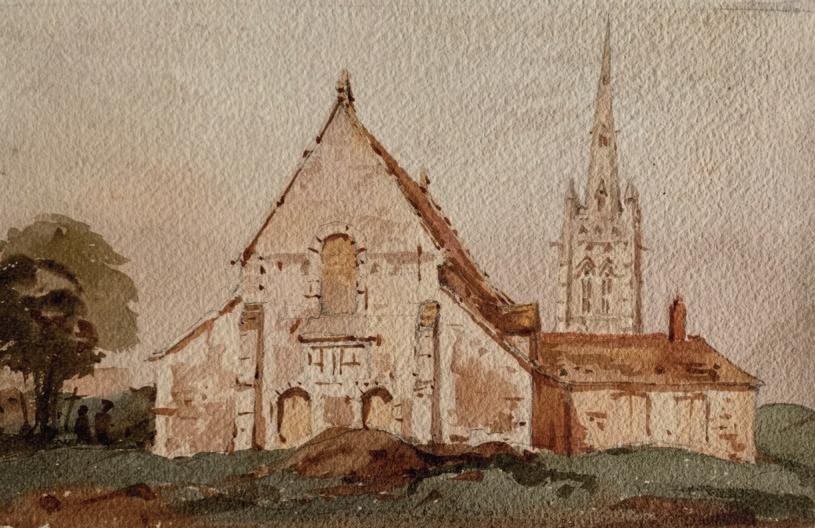
1. Oakham [Oakham Castle and All Saints Church], 17 x 24.5 cm, c. 1850.
Petit’s composition carefully balances the Great Hall of the fortified manor house with the church behind.

2. Ulverscroft Abbey, 24 x 29 cm, c. 1830.
An Augustinian Priory founded in 1134, it was dissolved in 1539. A rare, fullsize example of Petit’s dark style in the early to mid-1830s. What looks at first sight to be monochrome contains many shades of the overall colour theme.
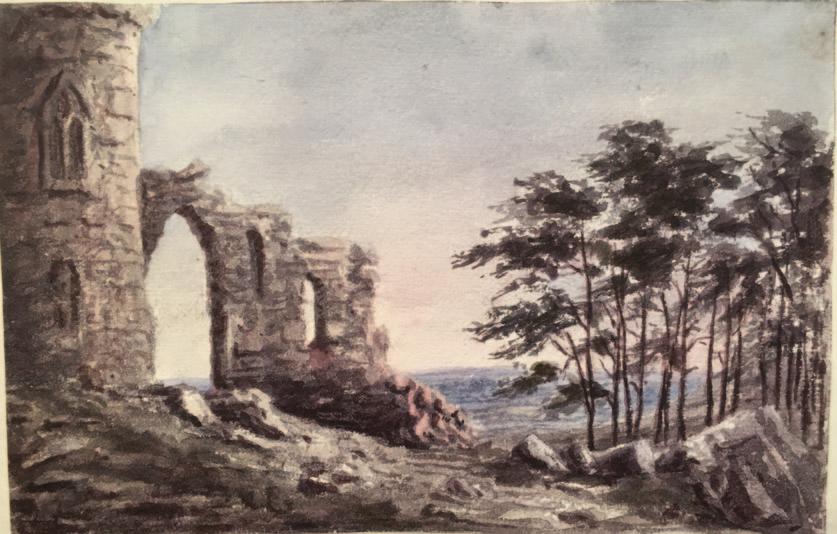
3. Old John Tower, Bradgate Park, 15.5 x 24 cm, c. 1825-30. Old John Tower, Bradgate Park was built in 1784 as a folly, and also served as a racecourse observation tower. An early picture - of a subject Petit would not paint in later years.
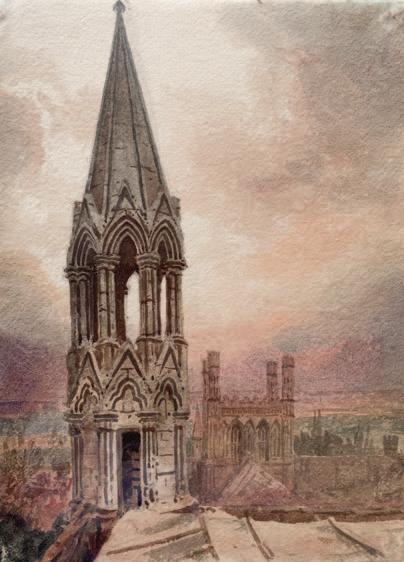
4. Peterborough [Cathedral], 34.5 x 25 cm, 1845.
Unusual view from the west end tower looking east, painted from the tower roof. Typically, Petit makes no attempt to spare the viewer a glimpse of the building's utilitarian lead roofing in the foreground of the composition.
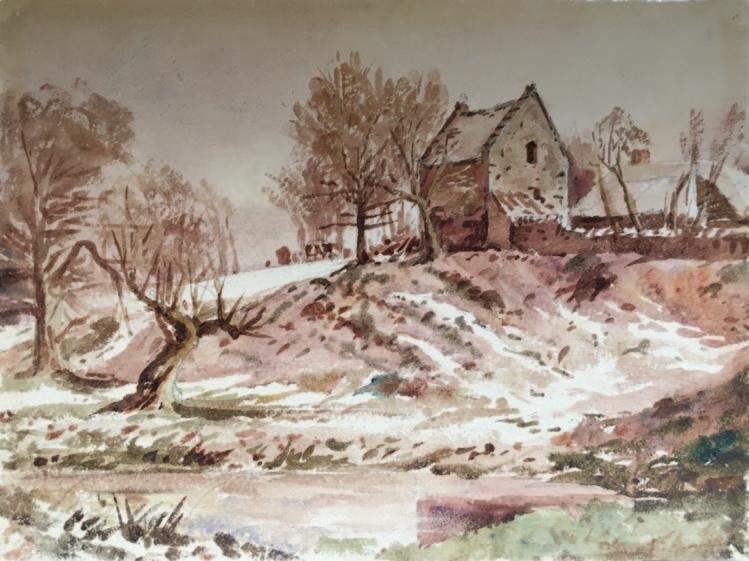
5. Near Harlestone, 25.5 x 34 cm, 1848.
Everyday snow scenes are very rare in British landscapes. In the 1850s, Britain experienced a mini ice age with snow on the ground for days or weeks most years - a nuisance not deemed picturesque without mountains.

6. Crowland Abbey, 34.5 x 25.5 cm, 1845.
With a mastery of perspective, Petit deploys contrasting effects of light and shade to convey three dimensional depth, to highlight the structure of the Gothic building with its numerous niches, and to capture the ghostly character of the building.
“As good a picture of a building as you are likely ever to find.”
(Dr Robin Simon, editor, British Art Journal, 2025).

7. Crowland [Trinity Bridge], 28 x 38 cm, 1861. Petit referred to the structure as an “architectural freak”. The ragged and untidy brush marks may be intended to convey the bizarreness of the structure - an eccentrically-designed bridge to nowhere, spanning nothing.
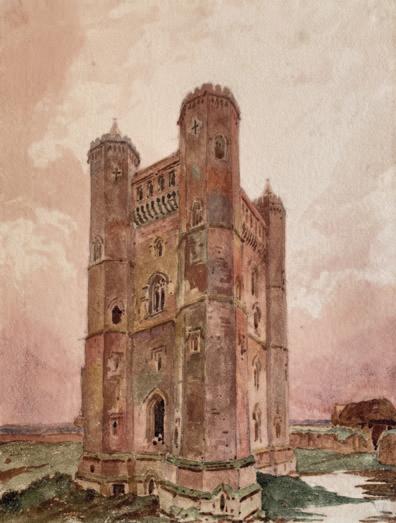

8. (i) Tattershall Castle, Lincolnshire, 34 x 25 cm, 1845.
(ii) South Kyme, Lincolnshire, 34 x 25 cm, 1845.
The close viewpoint in the painting of the 15thC Tattershall Castle gives it a greater sense of power and appearance of modernity. The 14thC South Kyme tower is more diminished and isolated. Not coincidentally, the former was and still is in use, while the latter was and is abandoned.

9. Ely Cathedral, 29 x 39 cm, 1868.
A view from the southeast painted in the last year of Petit’s life. The foreground gives an impression of muddy rusticity, probably realistically, yet this only enhances the grandeur of the building shown in its true setting.

10. Nr Torquay, 25 x 34 cm, 1848.
Petit’s fishing boats near Torquay is a theme and composition repeated almost exactly by Monet 20 years later. Marine works until that point tended to be more Romantic and refined, with rich bright colouring.

11. Paris [Notre-Dame Cathedral], 28 x 39 cm, 1861.
Petit’s view of Notre-Dame Cathedral combines several aspects of his art: the modern realistic town view painted without precision; the contrast of the Cathedral with the rough rubble-strewn banks of the Seine; and the limited colour palette, with variations of tone.

12. Locmariaker [Locmariaquer, Brittany], 27.5 x 39 cm, 1851.
An unusual study of a megalith, with a church in the distance. Petit undertook rock studies often, sometimes for their own sake, or as in this picture, comparing a naturally formed structure with a church.
“No true artist, whatever be his branch of art, will rest content without doing something towards its improvement, either in developing beauties or correcting faults: he will not think all is done which is required of him when he has learned to work according to certain received rules and precedents.”
JL Petit on Architectural Refinement.
Lecture 16th March 1859, Architectural Museum, London.
“Perseverance in this as in everything else, has its reward, and genius is the word by which the world characterizes the man who can work the most, and who, for its own sake, loves his work most.”
Philip H. Delamotte (Professor of Drawing, King’s College London, subsequently Chair of Fine Art), On the Art of Sketching From Nature (2nd ed. 1888).
Delamotte ended his book with the sentence above, and a picture by his deceased friend JL Petit.
RPS Publications www.revpetit.com
All images are of watercolours by JL Petit, in private collections except where stated
All rights reserved
Design: sarahgarwoodcreative.com
Printed by: Gemini Digital
ISBN no: 978-1-9164931-6-2
© 2025 Philip Modiano
“There has been nothing like this in the field of British art for a long time -the rediscovery of a more or less completely forgotten master.”
Andrew Graham-Dixon, art historian and broadcaster, 2025

